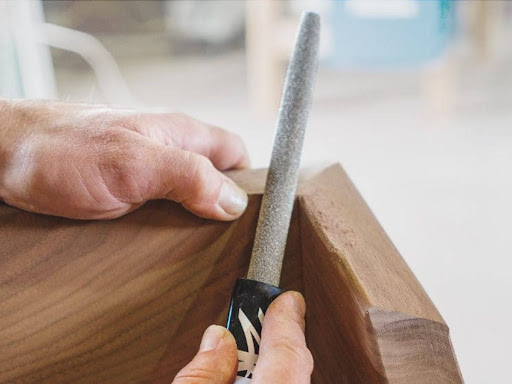
In woodworking, metalwork, and even plastic shaping, achieving smooth and precise edges is essential for a professional finish. A fine rasp is one of the most versatile tools for this task. Unlike coarse files or power sanders, rasps provide greater control, making them ideal for delicate projects where precision matters. Whether you’re a hobbyist or a seasoned craftsman, understanding how to use a hand rasp tool effectively can elevate the quality of your work.
Understanding Fine Rasps And Their Uses
Rasps are specialized hand tools with sharp, raised teeth designed to remove small amounts of material quickly. A fine rasp has smaller, closely spaced teeth, making it perfect for detailed shaping or finishing work on wood, soft metals, or composites. For example, when creating curved furniture components or refining a carved wooden sculpture, a fine rasp allows for subtle adjustments without damaging the surface.
A hand rasp tool is particularly useful for beginners because it requires minimal setup and offers excellent control. Its ability to shape, smooth, and refine edges on various materials makes it a staple in many workshops. Compared to coarse rasps or power tools, fine rasps reduce the risk of over-removing material, ensuring a smoother finish.
Preparing Your Work Area And Materials
Before using a fine rasp, prepare your workspace to ensure both safety and accuracy. Secure your workpiece using clamps or a vice to prevent unwanted movement. Wear protective gear like safety glasses and gloves to avoid injury from sharp edges or stray particles.
Select the right rasp for the material. For wood projects, a fine rasp can be used after rough shaping to refine details. For metal or plastic edges, choose a high-quality hand rasp tool designed for those specific materials.
Proper Rasping Techniques
- Grip and Angle: Hold the rasp handle firmly with your dominant hand while guiding the tip with your other hand. Maintain a shallow angle to the surface to avoid gouging.
- Light Pressure: Apply light, even pressure during each stroke. Heavy pressure can remove too much material or leave uneven marks.
- Consistent Motion: Use smooth, controlled strokes, working in one direction. Avoid sawing back and forth, which can dull the teeth and create a rough finish.
- Check Progress Frequently: Periodically check your progress to prevent over-shaping. Using a straightedge or template can help you maintain uniformity.
Common Mistakes To Avoid
Many beginners press too hard with their rasps, leading to uneven edges or damage to the material. Another common mistake is neglecting to clean the rasp teeth, which can clog with debris and reduce efficiency. Use a wire brush to remove buildup regularly.
Also, avoid using a single rasp for multiple materials. For instance, a rasp used on metal may become less effective on wood. Dedicate specific rasps to specific tasks for optimal performance.
Maintenance And Care For Your Rasp Tools
To extend the life of your rasps, store them in a dry environment and avoid letting them knock against other tools, which can dull their teeth. Regular cleaning with a stiff brush or compressed air prevents clogging. For rasps used on metals, lightly oiling the surface can prevent rust.
Sharpening rasps is generally not practical, so proper care ensures they remain effective for longer. Investing in a quality hand rasp tool also guarantees better durability and performance over time.
Conclusion
Mastering fine rasp techniques is essential for anyone serious about achieving smooth edges and professional finishes on a variety of materials. Whether you’re refining a wooden sculpture, deburring a piece of metal, or shaping plastic components, rasps provide unmatched control and precision. A high-quality hand rasp tool is a must-have for every workshop, offering versatility that power tools sometimes can’t match.
By preparing your workspace properly, using the right techniques, and maintaining your tools, you can ensure that your projects consistently meet high standards of craftsmanship. For more advanced shaping or intricate designs, pairing rasps with complementary tools such as rotary carving tools for wood can open up even more creative possibilities.